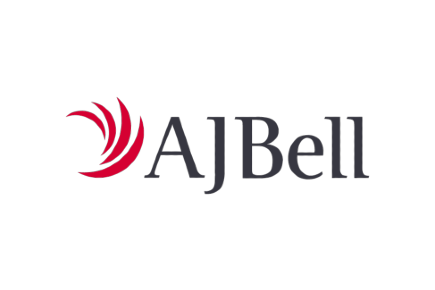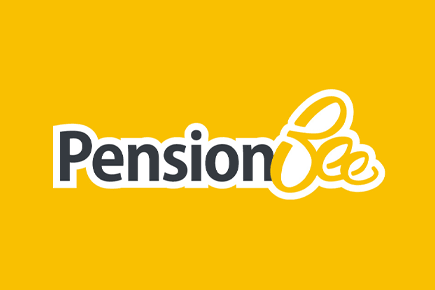Roth IRA accounts are one of the most popular personal finance options for savers in the US looking to create a pot for retirement. As a UK resident, you can’t access a Roth IRA. In the UK there are two types of alternatives to a Roth IRA: An Individual Savings Account (ISA) and a Self-invested personal pension (SIPP)
Also consider: Find the best private pension UK
The top Roth IRA UK equivalents for April 2024
Here is my list of the best Roth IRA UK equivalents in the UK. Please review each provider before making a decision on which one is best for your needs.
Closest Roth IRA equivalents at a glance
Freetrade – Best for larger pots and those that prefer to buy their own stocks
Open an account and make a deposit of £50 with Freetrade and you will automatically receive a free share worth at least £10. This can help boost your pension or ISA.
I’ve recommended Freetrade for larger pots, as I feel they have the most to gain from the flat fee structure at Freetrade. In addition, those that like to choose their own stocks will benefit from commission-free trading on a vast number of US, UK and European stocks, ETFs, REITs, and Investment Trusts.
What I like about the Freetrade ISA and SIPP
If you have existing pensions that you would like to consolidate then Freetrade provide a tracing service. The Freetrade SIPP will also pay 3% on any uninvested cash you hold within your Freetrade account.
Freetrade also make their ISA and SIPP products available on an award-winning app that is user-friendly and intuitive, making trading on the go accessible to everyone.
Fees: £4.99 for the ISA, £9.99 for ISA and SIPP
Minimum balance: £0
Products available: General Investment Account, ISA, SIPP
When you invest your capital is at risk, the value of your investments can go down as well as up and you may get back less than what you invest. Eligibility to invest into an ISA and the value of tax savings depends on personal circumstances and all tax rules may change. Other charges may apply. ISA Promotion free share terms and conditions apply.
interactive investor – Best for DIY investors
Open a SIPP with interactive investor and they will waive their monthly SIPP fee for 6 months, saving you over £75 in total.
For those that like to manage their own investments, interactive investor is a great choice with a massive range of assets. There are also a number of funds available, including Quick Start Funds which would be more suitable for investors who are just starting out.
What I like about the interactive investor SIPP and ISA
interactive investor have won awards for both their SIPP and their ISA. The ISA comes with a free regular investing service for those willing to invest at least £25 per month.
interactive investor also provide a Pension Trading Account. This allows account holders to invest in assets that are not usually available within a SIPP such as property. This is a great addition for experienced investors who are looking to expand their portfolio
Fees: £9.99 per month, Cost per trade £7.99 plus one free trade per month
Minimum balance: £0
Products available: General Investment Account, Stocks and Shares ISA, SIPP, Junior Cash ISA, Junior Stocks and Shares ISA, Company Account, Cash Savings
AJ Bell – Best for low-cost and wide range of investments
AJ Bell are one of the largest online investment platforms in the UK with more than £68 billion in assets under management. In terms of investment options, the sky is the limit at AJ Bell with an excellent array of funds, shares, investment trusts, and exchange-traded funds to choose from. There is also a range of passive funds and favourite funds for less confident investors.
What I like about AJ Bell’s ISA and SIPP
AJ Bell were the first platform to ever launch an online SIPP in the UK. Here you will be charged a percentage fee for a SIPP which is just 0.25% of your total pot. This is ideal, especially for smaller pots, however, as your pot increases, this percentage fee structure could start to add up.
The SIPP and ISA also facilitate regular investments from just £25 per month.
Fees: 0.25% annual platform fee reduced to 0.10% for pots over 250,000 and free for pots over £500,000
Minimum balance: £0
Products available: ISA, Junior ISA, Lifetime ISA, SIPP, Dealing Account, Platinum SIPP, Platinum SSAS, Cash Savings Hub
Capital at risk.
PensionBee – Best for consolidating pensions
This is an excellent option for anyone looking for a simplified solution that takes a minimal amount of time to set up and maintain.
This is a completely ‘done for you’ service, and at PensionBee you can expect excellent levels of customer service and low-cost annual fees that range between 0.50% and 0.95% depending on the fund you select.
What I like about the PensionBee SIPP
PensionBee provide a dedicated pension service, including help finding existing pensions and transferring them to your PensionBee account. There are seven funds to choose from, which keeps things simple.
Fees: 0.50% – 0.95% total annual fee, halved for pots over £100,000
Minimum balance: £0
Products available: SIPP
Capital at risk.
Penfold – Best for self-employed pensions
Penfold claim that they can have self-employed people set up with a pension in five minutes. This includes a possible £1,000 in bonus money when you transfer an existing pension to Penfold.
Don’t worry if you don’t have an existing pension to transfer, Penfold are also a great solution for people looking to set up a brand new pension.
What I like about the Penfold Pension
Not only is this a quick and easy pension to set up, but excellent levels of customer service mean that you can access help on how much capital to save, and which plan is the best to meet your needs.
It is also cost-effective and investment choices include funds managed by HSBC and BlackRock as well as a Shariah option and a sustainable pension fund.
Fees: 0.75% total annual fee, halved for pots over £100,000
Minimum balance: £0
Products available: SIPP
What is a Roth IRA?
A Roth IRA (standing for “individual retirement account”) is a type of account offered by the US government that’s specifically designed to help savers create a pot for retirement.
With Roth IRAs, you can pay after-tax income into the account. This must be done as cash, rather than other assets such as equities, securities, or property.
Money in the Roth IRA will then be invested in a range of assets aiming to generate a return over time, including:
- Stocks and shares
- Funds and ETFs
- Bonds
- Certificates of deposit (CDs).
Crucially, unlike a traditional IRA (read more about this below), eligible distributions taken from the account in retirement will be tax-free. So, while you will have to pay the tax bill on your money before you contribute it, you’ll be able to withdraw it without incurring a charge, provided that your distributions are eligible.
Currently, as of August 2022, withdrawals must be taken after age 59 and a half, and must be after a five-year holding period. There are a few notable exceptions when you might be able to access your money early, including using it for:
- A first-time home purchase
- College expenses
- Birth or adoption expenses.
Otherwise, early withdrawals may incur a penalty.
What is the difference between a Roth IRA and a traditional IRA?
You may have also heard of a “traditional IRA”, a slightly different kind of US retirement account to a Roth IRA.
In a traditional IRA, your contributions are “tax-deductible”. That means your payments come from pre-taxed income, deferring the tax bill until later. Your money is then invested in a similar range of assets as a Roth IRA.
When you come to retire, you’ll be taxed on distributions from your traditional IRA as income. The tax rate will depend on your income in retirement, meaning you could pay more, less, or the same in tax as you would have had you paid the tax bill at the time you made your contributions. Investment returns may also be subject to this tax.
As a result, it’s worth carefully managing your tax position to ensure that you don’t end up paying more in tax on your money than if you had contributed after-tax income to a Roth IRA.
How to access a Roth IRA from the UK
If you’re a US citizen or former resident with a Roth IRA now living in the UK, you’ll be pleased to hear that you can access your account from across the pond.
Thanks to the double taxation tax treaty between the UK and the US, you will not be charged UK tax on your Roth IRA if you are a US expat now resident in the UK.
Rather, you’ll face whatever taxation you would be subject to if you were a US resident. This goes for both periodic and lump sum payments.
So, if you’ve moved to the UK after setting up a Roth IRA, you will simply face the tax you would have, had you stayed in the US. The Expat Tax Professionals website has more information available if you are unsure about how this works.
Alternatives to Roth IRA in the UK
1. Individual Savings Accounts
An Individual Savings Account (ISA) is arguably the closest UK equivalent to a Roth IRA in the way it functions and what it can offer you.
ISAs are a type of tax-efficient savings account. Each tax year, you can save or invest after-tax income into the range of ISAs on offer. This is up to the ISA allowance, an annual limit on your tax-efficient saving or investing. In the 2022/23 tax year, the ISA allowance is £20,000.
One big difference between an ISA and a Roth IRA is that you can generally withdraw money from most types of ISAs whenever you want. There are exceptions to this, such as the Lifetime ISA (find out more about this below).
However, unless the ISA your provider offers is “flexible”, you should bear in mind that you typically won’t get back your used ISA allowance if you withdraw money from your ISA in the same tax year that you deposited it.
For example, if you put £10,000 into the account and then withdrew £5,000, you’d still usually only have £10,000 of allowance left to use. Make sure to check whether your ISA is flexible before you withdraw any money.
You also won’t be able to carry forward ISA allowance to future tax years. So, if you don’t use it in a particular year, you’ll lose it.
ISAs allow you to save and invest tax-efficiently
Crucially, the main benefit of an ISA is that it allows you to save and/or invest your money tax-efficiently. Any interest your money generates is free from Income Tax, and investment returns are free from Capital Gains Tax (CGT) and Dividend Tax.
That means, much like a Roth IRA, you will not be taxed when you come to withdraw money from your ISA.
However, your ISA account can technically not be considered a fully tax-free savings account as the value may be included in the calculation of your estate. As a result, it may be subject to Inheritance Tax (IHT) on your death.
Different ISAs for you to consider
There are various ISA accounts available to choose from and use your ISA allowance across. Find out more about these options below.
Remember: you can divide your ISA allowance across these accounts as you see fit.
Stocks and Shares ISA
Also known as “investment ISAs”, Stocks and Shares ISAs allow you to invest your money tax-efficiently.
With a Stocks and Shares ISA, UK investors can access a range of investment options across the stock market, including:
- Individual stocks and shares (hence the name)
- Funds, such as index funds and exchange-traded funds (ETFs)
- Bonds, such as corporate bonds and gilts.
As mentioned above, any investment returns will be entirely free from CGT and Dividend Tax.
Cash ISA
Rather than investing through a Stocks and Shares ISA, you could choose to save your money in cash through a Cash ISA.
Cash ISAs are typically held with a financial institution such as a bank or building society. You’ll then receive interest on your money depending on the interest rate offered by the provider.
As with the other types of ISAs, any interest earned is Income Tax-free. This can be a concern if you are saving particularly large sums, which you may well be intending to do if you’re saving for retirement.
So, a Cash ISA could help you to make the most of interest on your money, rather than paying a tax bill on your retirement savings.
Cash ISAs may lose value to inflation
While the interest your account generates will be free from tax, the value of the money in your account could still lose value in real terms due to the eroding effects of inflation.
According to simulated figures collated by MoneyFarm, Cash ISAs produced average annualised returns of 1.21% over the decade to December 2021.
Meanwhile, according to the Bank of England‘s inflation calculator, inflation averaged 1.8% between 2011 and 2021. That means your money would have lost spending power against the wider economy.
If you’re intending to save for retirement over a longer period, this effect may become even more pronounced as costs continue to rise while the interest you receive fails to keep pace.
By contrast, MoneyFarm found that Stocks and Shares ISAs produced annual gross revenues of 9.64%, outcompeting both Cash ISAs and the rate of inflation.
As a result, you may want to consider investing at least a portion of your money to ensure that it retains its value over time, especially if you intend to live on it in retirement.
Lifetime ISA
If you’re aged between 18 and 39, you could choose to save or invest through a Lifetime ISA (LISA).
A LISA is a type of ISA account that’s specifically for individuals who want to save or invest towards:
- Buying a first home
- Retirement.
Handily, the UK government offers a 25% bonus on LISA contributions. You can contribute up to £4,000 (which counts towards your overall ISA allowance) in a single tax year to a LISA, meaning you could receive a government bonus of up to £1,000 each year. And, as it is an ISA, it comes with the same tax-efficient benefits as the other accounts.
However, if you take money out of your account for a purpose other than buying a first home or retirement, you’ll face an early withdrawal charge of 25%. This will remove any government bonus plus a little extra to discourage savers from doing so.
For example, if you contributed the maximum amount of £4,000 and received your £1,000 bonus, you’d have £5,000. If you then withdrew this amount entirely without using it for one of the intended purposes, you’d pay an early withdrawal charge of £1,250 – meaning you’d lose £250 overall.
As a result, you’ll need to be confident that you don’t need access to your money in the short term before you contribute it.
There are both Stocks and Shares LISAs and Cash LISAs to choose from. You can open both, although you can only claim the government bonus once, so it can be more effective to hold just one.
Junior ISAs
If you have children or grandchildren, you can open a Junior ISA (JISA) in their name, too. This is a type of ISA specifically for under-18s.
JISAs come with a separate JISA allowance, currently £9,000 in the 2022/23 tax year. This allowance is held in your child’s name, making it separate from your adult ISA allowance.
You can save in a Cash JISA or invest through a Stocks and Shares JISA. Equally, you can always split the allowance between both kinds of account as you see fit.
So, if your goal for your Roth IRA-equivalent account is to provide a nest egg for a child or grandchild, a JISA could be a useful, tax-efficient option that allows you to save or invest beyond your personal ISA allowance.
2. Self-invested personal pension
A self-invested personal pension (SIPP) is another potential UK equivalent to a Roth IRA.
In a SIPP, you can contribute money towards your retirement to be held within the “pension wrapper”. Just like a Roth IRA, this is typically from after-tax income.
You then select your own investments, including stocks and shares, bonds, funds, and more, with the goal of generating a return on your money. Any interest or returns your money generates will be free from Capital Gains Tax (CGT).
It’s worth noting that you’ll be selecting your own investments in this kind of account, unlike a private or workplace pension where this is done for you by a manager.
That means you’ll need to be confident in your investment knowledge and decision-making, as mistakes with your pension savings could potentially be detrimental to the retirement lifestyle you’re able to live.
Tax relief on SIPP contributions
The UK government offers tax relief to encourage people to save for retirement in pensions. As SIPPs are a type of pension, that means you’ll receive tax relief at your marginal rate of Income Tax on money you contribute to the account.
While this differs from a Roth IRA where you have to pay any tax and then contribute it to your account, it can still be just as valuable.
In essence, this means a £100 pension contribution only “costs”:
- £80 for basic-rate taxpayers
- £60 for higher-rate taxpayers
- £55 for additional-rate taxpayers.
Basic-rate tax relief will be applied automatically, and you can claim higher- or additional-rate relief on your self-assessment tax return.
Tax relief will function differently if you have a “net pay” arrangement. In this case, your untaxed income goes straight into your pension, much like a traditional IRA. Either way, the effect is still the same: your money is tax-efficiently contributed towards your retirement.
The pension Annual Allowance limits your tax-efficient saving
As this tax relief is so valuable, there is a limit to how much you can save into your pension each year, known as the “Annual Allowance”. This is the maximum amount that can be contributed to your pension each tax year from all sources combined, including your employer, without incurring an additional tax charge.
The Annual Allowance stands at £40,000 or 100% of your earnings, whichever is lower, in the 2022/23 tax year. This is a relatively healthy sum that could allow you to build up a healthy pot each year.
You can carry forward unused Annual Allowance for up to three years. So, if you’ve used your entire allowance in the current tax year but didn’t in previous years, you’ll be able to use leftover allowance from up to three years ago.
Tax on SIPP withdrawals is more like a traditional IRA
A major difference to note between a Roth IRA and a SIPP is that, more like a traditional IRA, your SIPP withdrawals in retirement will be subject to tax, depending on how much your retirement income is.
You’ll typically only be able to access your pension at age 55 – rising to 57 in 2028. At this stage, you’ll be able to start withdrawing your funds, including usually being able to take the first 25% as a tax-free lump sum.
After that, money you take will normally be subject to Income Tax. So, how much tax you owe will depend on how much your overall retirement income is from all sources. This is unlike a Roth IRA, where eligible distributions are tax-free.
Which account is best for me and my retirement savings?
Now that you’ve read about the benefits that ISAs and SIPPs can offer, you may be wondering which is best for your retirement savings.
Largely, it will depend on your investment objectives. If you want to invest for your future knowing that you won’t be taxed when you come to draw on it, while also being able to access the value in it in a pinch, a Stocks and Shares ISA might be right for you.
Meanwhile, you might prefer to exclusively invest over the long term towards your retirement without the temptation to access your money. In that case, a SIPP could be a suitable option.
Or, if you’re uncomfortable with investing your money at all, a Cash ISA may be right for you – just remember that your money might lose spending power over time due to inflation.
Of course, nothing prevents you from opening multiple accounts to gain access to the various benefits that each one offers.
If you’re uncertain about which account to choose, you may want to consider seeking independent investment advice from a financial advisor.
An advisor will be able to recommend the most suitable option for you based on your personal financial situation and your investment goals.
Roth IRA UK equivalent FAQs
What is a Roth IRA UK equivalent?
What’s the difference between a Roth IRA vs a Stocks and Shares ISA?
Please note:
A pension is a long-term investment. The fund value may fluctuate and can go down, which would have an impact on the level of pension benefits available. Your pension income could also be affected by the interest rates at the time you take your benefits.
The value of your investments (and any income from them) can go down as well as up and you may not get back the full amount you invested. Past performance is not a reliable indicator of future performance. Investments should be considered over the longer term and should fit in with your overall attitude to risk and financial circumstances.
For more reviews, tips, and information, sign up to our weekly newsletter.
- Learn how to invest in the FTSE100
- Have you considered transferring your pension?
- Find the best trading platforms





